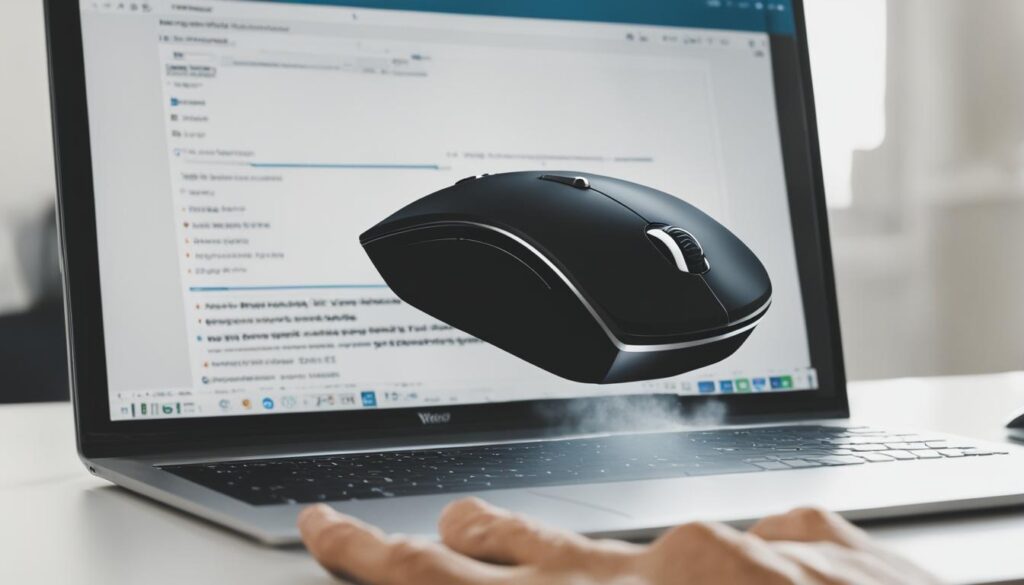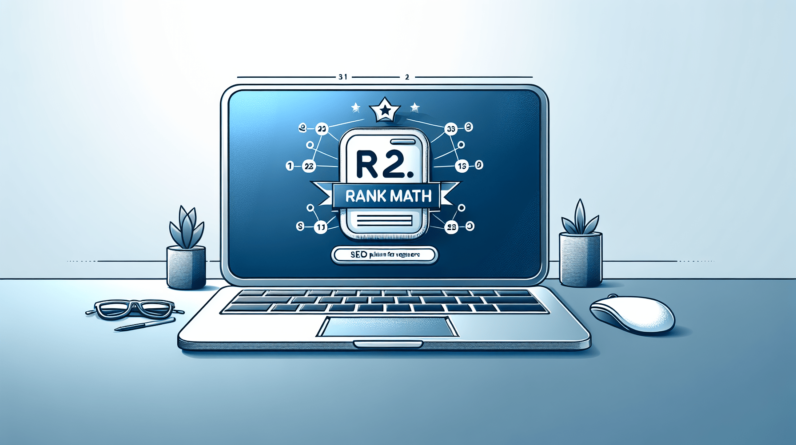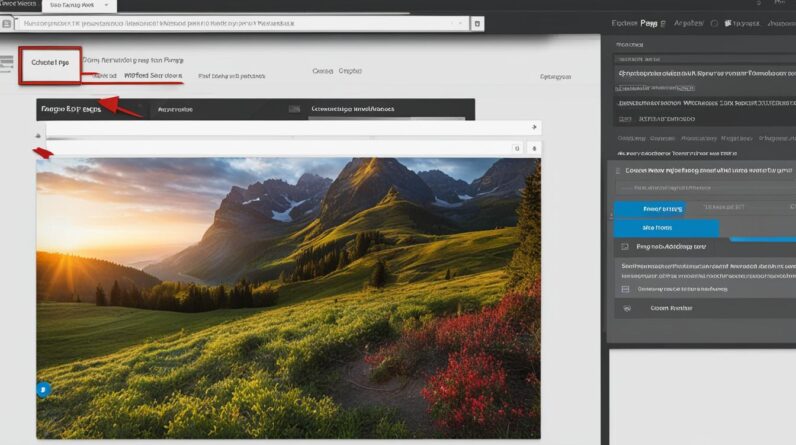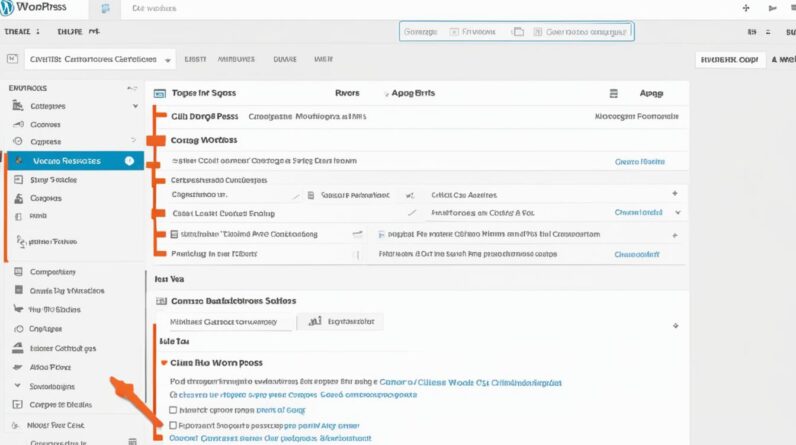Utilizing a localhost for your WordPress site enables you to run updates, test plugins, or build your site in private. This means you can make changes without affecting the user experience (UX) or worrying about mistakes that could disrupt operations. Most moderately-experienced developers will find it straightforward to get started. By following this step-by-step guide, you should be able to download the localhost software, add WordPress files, and create a database without any issues. In this post, we’ll take a closer look at WordPress localhost and its benefits. Then, we’ll show you how to configure WordPress on localhost and run through some common errors.
How to Make Money with YouTube
Create an empire of automated video websites for multiple streams of income
Key Takeaways:
- Installing WordPress on localhost allows for private and uninterrupted development and testing.
- Localhost provides a safe environment for making changes and updates to your WordPress site.
- Using a local development environment like XAMPP makes WordPress installation on localhost user-friendly.
- You’ll need a functioning operating system and a local development environment to install WordPress on localhost.
- Follow a step-by-step process to install WordPress on localhost using XAMPP and create a MySQL database.
What is localhost, and why is it useful for WordPress?
When you create a WordPress site, it typically resides on a web host’s server and is accessible to anyone with the correct URL. However, with localhost, you can run a website from your own operating system, like a PC, creating a private and remote environment. This allows you to work on your website even without an internet connection.
localhost also provides a safe environment for testing and trying new things, preventing any downtime on your live website in case a change breaks something. It enables you to create a development site for testing and experimentation before launching the live application. localhost is particularly useful for designers and developers, as it allows them to detect and fix issues before going live. Additionally, running updates or testing new software on localhost prevents any disruptions on the live site.
Can you install WordPress locally on any operating system?
When it comes to installing WordPress on your local machine, you have numerous platforms to choose from. However, one of the most user-friendly and compatible options available is XAMPP. Regardless of whether you’re using Mac, Windows, or Linux, XAMPP provides a seamless experience for WordPress installation on localhost. As an open-source and free software, XAMPP supports the installation process and ensures compatibility across various operating systems.
Comparison of WordPress Installation Platforms
| Operating System | WordPress Compatibility | User-Friendly |
|---|---|---|
| Mac | Yes | Yes |
| Windows | Yes | Yes |
| Linux | Yes | Yes |
As the table illustrates, XAMPP ensures compatibility with WordPress installations on all major operating systems. It guarantees a user-friendly environment, making the installation process seamless and hassle-free.
Requirements to Install WordPress on Localhost
Installing WordPress on localhost requires a few key components to ensure a smooth setup. Here are the main requirements for installing WordPress on localhost:
- Operating System: You’ll need a fully-functioning operating system, such as a PC, to store your website files and act as a virtual server.
- Storage: Sufficient storage space is necessary to accommodate your WordPress files, media, and other website resources.
- Local Development Environment: To create a localhost environment, you’ll need to download a local development tool like XAMPP. XAMPP is a free and open-source software that includes the essential components for running a local server, such as Apache, MySQL, and PHP.
By meeting these requirements, you can set up WordPress on localhost and harness the benefits of a local development environment.
| Requirement | Description |
|---|---|
| Operating System | A fully-functioning operating system, like a PC, to store your website files and act as a virtual server. |
| Storage | Sufficient storage space to accommodate your WordPress files, media, and resources. |
| Local Development Environment | A local development tool like XAMPP, which provides the necessary software components (Apache, MySQL, and PHP) for running a local server. |
These requirements are essential for a successful WordPress installation on localhost. Ensure you meet each requirement before proceeding with the setup process.
How to Install WordPress on Localhost
To install WordPress on localhost using XAMPP, follow this step-by-step guide:
- Download and install XAMPP, choosing the version that corresponds to your operating system.
- After installing XAMPP, launch the XAMPP control panel and start the Apache, MySQL, and PHP modules.
- Visit the official WordPress website and download the latest version of WordPress.
- Extract the WordPress files into the htdocs folder within the XAMPP installation directory.
- Open phpMyAdmin, a web-based administration tool included in XAMPP, and create a MySQL database.
- Access your local website in a web browser and provide the necessary database details to complete the WordPress installation.
- Follow the on-screen prompts to set up your site and finish the installation process.
By following these steps, you can successfully install WordPress on your localhost using XAMPP. This allows you to create and test websites locally before making them live.
Installing WordPress on localhost provides developers and designers with a safe and controlled environment for testing, development, and staging purposes. It allows you to make changes to your website without affecting the live version and provides a platform for troubleshooting and trying new features before deploying them to your live site.
How to Move WordPress from Localhost to a Live Server
When you’re ready to transition your WordPress site from localhost to a live server, you can follow these steps to ensure a smooth migration. By using a WordPress migration plugin like Duplicator, you’ll be able to export your site’s files from the local installation and then create a database on the live server.
To transfer the files, you can use a secure FTP (SFTP) client like FileZilla. FileZilla allows you to copy the files from your local installation to the live server easily. Once the files are successfully transferred, you’ll need to import the database and update the necessary configuration settings for your site to function correctly on the live server.
Step-by-Step Guide to Move WordPress from Localhost to a Live Server
- Install and activate the Duplicator plugin on your localhost WordPress site.
- Package your site using the Duplicator plugin. This will create a ZIP file containing your site’s files and a SQL file for the database.
- Move the package created by Duplicator to the live server using an SFTP client like FileZilla.
- Create a new database on the live server and note down the database details.
- Run the Duplicator installer script on the live server by accessing the package’s URL in a web browser.
- Provide the necessary database details during the installation process.
- Follow the prompts to complete the migration process.
- Once the migration is done, update any configuration settings such as website URL references in the WordPress dashboard.
- Test your live server website to ensure everything is functioning correctly.
By following these steps, you can seamlessly move your WordPress site from localhost to a live server, allowing your website to be accessible to the public.
| Key Tools | Description |
|---|---|
| WordPress Migration Plugin (Duplicator) | A plugin that enables the export and import of WordPress site files and databases for smooth migration from localhost to a live server. |
| SFTP Client (FileZilla) | An SFTP client that securely transfers files between your local computer and the live server. It allows you to copy your site files during the migration process. |
With the help of tools like Duplicator and FileZilla, you can effortlessly move your WordPress site from localhost to a live server, ensuring a seamless transition and uninterrupted online presence.
How to Transfer WordPress Localhost to Another Computer
Transferring a WordPress site from localhost to another computer can be done using various methods. Let’s explore three options:
1. Website Export with All-in-One WP Migration Plugin
If you prefer a simple and user-friendly approach, the All-in-One WP Migration plugin is an excellent choice. This plugin allows you to export your entire site’s content, settings, and media files.
With just a few clicks, you can create a backup of your localhost WordPress site and export it as a single file. Then, you can import this file into another WordPress installation on a different computer.
2. Built-in Import/Export Tools within WordPress
WordPress itself offers built-in import and export tools that enable you to transfer your site’s content from one installation to another. To use these tools:
- On your localhost WordPress site, go to the WordPress admin panel and navigate to “Tools” → “Export”.
- Select the content you want to export, such as posts, pages, media, and more.
- Click the “Download Export File” button to save the exported file to your computer.
- Transfer the exported file to the target computer.
- On the target computer, go to the WordPress admin panel and navigate to “Tools” → “Import”.
- Choose the WordPress importer and follow the prompts to import the exported file.
By following these steps, you can seamlessly transfer your WordPress site from localhost to another computer without the need for additional plugins.
3. Database Transfer with phpMyAdmin
For advanced users familiar with databases, you can use phpMyAdmin to directly export and import the WordPress database.
- Access phpMyAdmin from your localhost installation.
- Select your WordPress database.
- Click the “Export” tab and choose the export method (e.g., Quick, Custom).
- Save the exported SQL file to your computer.
- Transfer the SQL file to the new computer.
- Access phpMyAdmin on the new computer, create a new database, and import the SQL file.
Using phpMyAdmin provides a direct way to transfer the entire database, ensuring a seamless transition from localhost to the new computer.
Whichever method you choose, transferring your WordPress site from localhost to another computer is achievable with the right tools and steps.
| Method | Pros | Cons |
|---|---|---|
| All-in-One WP Migration Plugin | Simple and user-friendly | Requires installation of additional plugin |
| Built-in Import/Export Tools | No additional plugins required | May require manual customization of themes and settings |
| phpMyAdmin Database Transfer | Direct transfer of the entire database | Requires knowledge of databases and SQL |
How to uninstall WordPress on localhost
Once you’ve completed your tests, updates, or experiments in the local environment, you may want to uninstall WordPress on localhost. Uninstalling WordPress on localhost using XAMPP is a simple process. Follow the steps below:
- Open the Control Panel on your Windows computer.
- Navigate to Programs and Features.
- Locate the XAMPP application in the list of installed programs.
- Right-click on the XAMPP application and choose to uninstall it.
After uninstalling XAMPP, it is important to remove any remaining files and folders associated with XAMPP from your computer. This includes the WordPress files and folders that were created during the installation process. Make sure to delete them to free up space on your computer and ensure a clean uninstallation.
Removing WordPress on localhost allows you to clear your local environment and start fresh if needed. It is recommended to uninstall unused installations to maintain system performance and organization.

By following these steps, you can easily uninstall WordPress on localhost and remove all related files and folders from your computer.
Common WordPress localhost issues and how to resolve them
While installing and configuring WordPress on localhost is usually a straightforward process, there are some common issues that users may encounter. One such issue is when the installation fails due to a directory creation error. This can occur when the server does not have the necessary permissions to create directories. Another issue users may experience is when the localhost refuses to connect, preventing access to the local site. This issue can often be resolved by temporarily disabling the firewall or stopping any program that uses port 80.
To resolve these and other common WordPress localhost issues, troubleshooting steps may include:
- Checking file and folder permissions
- Adjusting firewall settings
- Restarting the server
If you encounter a directory creation error during the installation, ensure that the server has the correct permissions to create directories. You may need to modify the permissions manually or contact your server administrator for assistance.
If your localhost refuses to connect, check if your firewall is blocking the connection. Temporarily disable the firewall or add an exception for the local server’s port. Additionally, ensure that no other programs are using port 80, as this can cause conflicts.
By following these troubleshooting steps, you can overcome common WordPress localhost issues and successfully configure your WordPress site on localhost.
Conclusion
Installing WordPress on localhost using tools like XAMPP provides developers and designers with a local development environment where they can test, experiment, and make changes to their WordPress sites without affecting the live version. This local environment offers a safe and controlled space for troubleshooting and trying new features before implementing them on the live site. By following the step-by-step guide provided in this article, you can successfully install WordPress on localhost and leverage its benefits for testing, development, and staging purposes.
With a local development environment, you have the freedom to explore different themes, plugins, and configurations without the worry of disrupting your live site or incurring any downtime. You can carry out extensive testing and experimentation, ensuring that any modifications or updates are thoroughly vetted before making them live. This eliminates the risk of potential errors or issues negatively impacting your visitors’ experience.
Furthermore, having a local development environment enables you to troubleshoot any problems that arise, allowing you to identify and resolve issues quickly without affecting your live site. This not only saves time but also provides a safe and controlled space to fine-tune your WordPress installation.
In conclusion, utilizing WordPress on localhost provides a secure and efficient local development environment for testing, experimenting, and problem-solving. By following the installation process and leveraging the benefits of a local setup, developers and designers can confidently enhance their WordPress sites before deploying them to a live server.
FAQ
What is localhost, and why is it useful for WordPress?
Localhost allows you to run a WordPress site from your own operating system, creating a private and remote environment. It is useful for testing, development, and troubleshooting purposes, enabling you to make changes without affecting the live site and ensuring a safe environment for experimentation.
Can you install WordPress locally on any operating system?
Yes, you can install WordPress locally on any operating system. The most user-friendly and compatible option is XAMPP, an open-source software that supports WordPress installation on localhost. XAMPP works on Mac, Windows, and Linux systems.
What are the requirements to install WordPress on localhost?
To install WordPress on localhost, you need a fully-functioning operating system (e.g., PC), a local development environment like XAMPP, and a storage system to store your website files and act as a virtual server.
How to install WordPress on localhost?
To install WordPress on localhost using XAMPP, follow these steps: 1. Download and install XAMPP, selecting the appropriate version for your operating system. 2. Start the Apache, MySQL, and PHP modules from the XAMPP control panel. 3. Download the latest version of WordPress and extract the files into the htdocs folder in the XAMPP installation directory. 4. Create a MySQL database using phpMyAdmin. 5. Access your local website in a web browser and provide the necessary database details to complete the installation process.
How to move WordPress from localhost to a live server?
To move WordPress from localhost to a live server, use a WordPress migration plugin, such as Duplicator, to export your files and create a database on the live server. Transfer the files using an SFTP client like FileZilla, import the database, and update necessary configuration settings for the site to function properly on the live server.
How to transfer WordPress localhost to another computer?
To transfer WordPress from localhost to another computer, you can use a website export plugin like All-in-One WP Migration or utilize the built-in import and export tools within WordPress itself. Alternatively, you can export the database using phpMyAdmin and import it into the new computer to transfer the site.
How to uninstall WordPress on localhost?
To uninstall WordPress on localhost using XAMPP on Windows, open the Control Panel, navigate to Programs and Features, locate the XAMPP application, right-click on it, and choose to uninstall. After uninstalling XAMPP, delete any remaining files and folders associated with XAMPP from your computer.
What are the common WordPress localhost issues and how to resolve them?
Common WordPress localhost issues include installation failure due to directory creation error and the localhost refusing to connect. To resolve these issues, you may need to check file and folder permissions, adjust firewall settings, or restart the server. Troubleshooting steps may vary depending on the specific issue.
Conclusion
Installing WordPress on localhost using tools like XAMPP provides developers and designers with a safe and controlled local development environment. It allows for testing, experimentation, and troubleshooting without affecting the live site. WordPress on localhost offers numerous benefits for developers and can be easily set up following our step-by-step guide.






